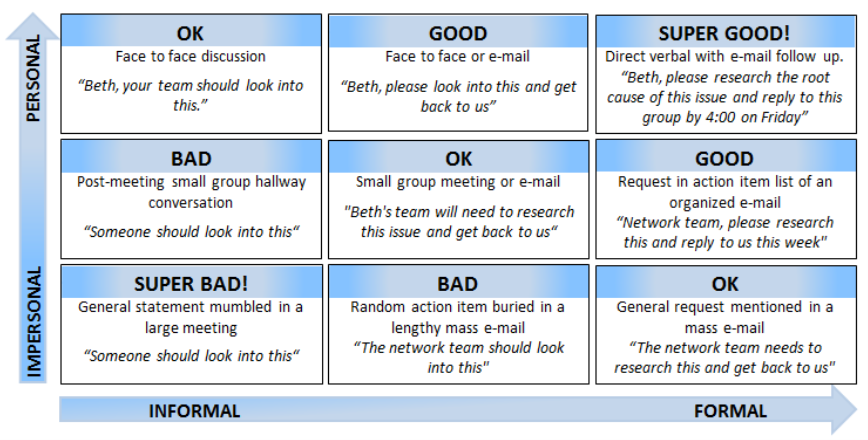
 By Tim Huff
By Tim Huff
TLG Senior Consultant
Ok, folks. Let’s return to the basics. How many times in the last week have you heard someone say, “we had a communication breakdown”, “no one told me about that”, “I thought he was taking care of that”, or some other well-used phrase to explain why an action was not completed? How often do we point to communication being the cause of failure?
As the famous line from Cool Hand Luke goes, “What we have here is a failure to communicate.” At all levels of an organization, from the front lines to the boardroom, communication failures can be argued as the single largest obstacle to accomplishing goals.
Back to the Basics
Having learned most of what we know as kids, communicating is fairly basic stuff, but as a leader, you need to pay close attention to the basics when communicating. When delivering a message, regardless of the audience or communication method, it is always important to be as clear as possible. The clearer the communication, the greater probability that the message will be understood in the way it’s intended. Ambiguity and vagueness almost always lead to failure.
Informal Communication
Communication can be informal or formal. Informal communication is delivered haphazardly, usually vague, and subject to different interpretations. An example of this is the casual walk up to someone’s desk for a chat. In between discussions of your exciting weekend escapades, you slip in, “Oh by the way, can you look into that thing from last week?” After you walk away, if the other person even remembers the task, he may not know which thing to look into, how much time to spend on it, what the deliverable is, or when to complete it.
Formal Communication
On the other hand, formal communication involves a deliberate transfer of a message in a clear, concise, and complete way that minimizes the probability of misinterpretation. The best examples of this include both written and verbal transfer of a task. For example, say “please analyze the options for the new product launch we discussed last week and provide an e-mail with your findings to me and the leadership committee by noon on Wednesday. I’ll follow up with an e-mail later today as a reminder.” See the difference?
Would you rather be given an assignment by a boss using informal communication or formal communication? Both can be appropriate at times, but when giving an important tasking, formal is almost always preferred. Even if you’ve worked with someone for many years and you can almost complete each other’s sentences, you’re risking failure if you rely on informal communication when assigning an important task.
Personal and Interpersonal Communication
Communication can also be either impersonal or personal. We’ve all been in those meetings. Two dozen people in the room, and the boss says, “someone give me next month’s projections by tomorrow.” Who is someone? Unless the team has one of those guys who always volunteers for everything, chances are, the boss won’t get the projections. Impersonal assignments don’t establish ownership. Someone must have the rose pinned on them for the successful accomplishment of the task.
Personal communication deliberately focuses on an individual. Whoever is the best person to get the job done, look them in the eyes, address them by name, and give them the assignment. Make sure there is no misunderstanding of who is responsible for getting it done.
Delivering the Message
Imagine Beth is a hard-working, well-meaning manager of the network team. Which of the following do you think she would prefer to receive a task?

We learn the basic skills of communication as kids, but we need to continually focus on improving our ability to effectively communicate throughout our lives. The next time you need to give an important assignment to someone, remember to be personal and formal.
C is for communication. Learn it. Love it. Live it.

